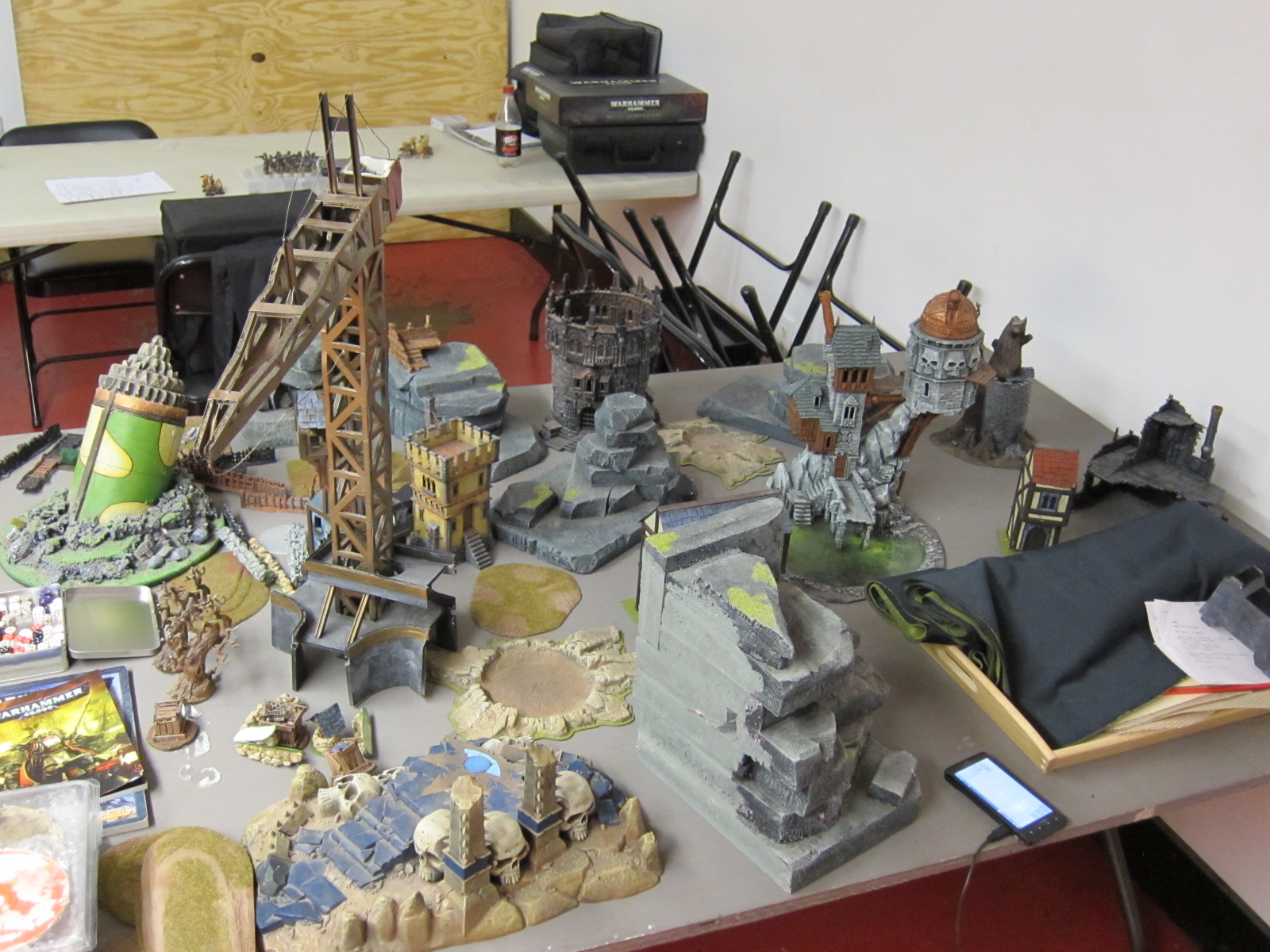Terrain: How Much, and What Does It Mean?
I was given a topic by a reader, and it was interesting enough to make me want to write about it: terrain density and how it affects the game, both in balance and from the perspective of what I view to be the primary goal of the game (fun!). Firstly, terrain density is broken into two sections for me: line of sight blockers and cover saves. The former affects what targets are available and the latter affects how resilient any given target can be. Both dramatically affect game balance and the way various armies will interact, lending natural advantages to certain army types and stripping advantages away from others. Starting off, let's look at the basics.
Terrain Density
We've all shown up at a tournament (or at least seen pictures) and seen the three trees, one hill and a mid-sized ruin off to the side and wondered if the tornado that carried all the terrain off is going to come back. Likewise, I can think of a few times when I showed up and thought "my land raider needs a dozer blade" because there are no clear paths wide enough. The range of how much terrain people place is huge, and there are certain advantages and disadvantages to both. One point to consider is that highly dense terrain heavily favours two types of armies: assault armies such as Tyranids, and armies with less resilience then space marines. In both cases, the abundance of a cover save gives the entire army a better chance to survive against the shooting that is almost inevitable, and it makes it very difficult for the opposing team to properly counter move and bring up counter assaulting units to where they are needed most. It is also far more forgiving towards a poor deployment phase, it softens the blow of going second by mitigating the advantage of first turn, and makes reserves less of a risk as your units on the board are far less likely to evaporate under plasma fire and artillery.
On the other hand, it dramatically changes the balance of the game. Deep striking units no longer have great swathes of area to appear in, leading to the mechanic being purely detrimental, especially for large and expensive units like the wraithknight and monolith. Highly mobile units like jump packs, bikes, and mechanized infantry (infantry in transports like rhinos) must risk the ever present dangerous terrain tests simply to use the advantage they have over regular infantry. Armies designed with the standard low density table in mind are punished, while less carefully designed armies tend to have a lesser disadvantage to overcome. Further, specialist armies, such as a blood angels assault company, daemons with their deep striking, and any mechanized force that didn't spend 5 points per vehicle to mitigate rolling through terrain. This is a good thing for friendly games, or for those who wish more of a skirmish style game, but for competitive play equalizing specialist armies is the opposite of what you want to be doing.
Line Of Sight Blocking Terrain
This, contrary to some belief, is not directly tied to density, and offers advantages and disadvantages very different to the above section. This terrain includes things like statues, hills, impassable scenery, and other pieces of terrain that don't simply fill the board with labels of 5+ and 4+ but actually change where the battle may be fought. You can have a very sparsely covered board, but still emphasize tactical thought and force players to plan their turns. Most people tend to think "more terrain, more tactics and strategy" but as I pointed out above, this is not always the case and often the opposite. The difference between changing how the battle is fought and where/when it is fought is important.
By keeping to the standard of 25% terrain (which is a surprisingly dense board coverage) but replacing much of the standard open door and window ruins with solid walls, statuary, and terrain that restricts sight lines, you can have your cake and eat it too, allowing specialist armies to use their advantages, but allowing softer lists to make use of the battlefield to mitigate their disadvantages. This sort of a field places the stress on how you use the terrain, while a swathe of cover saves simply changes when you use it - that subtle difference can make or break your gaming.
Lastly, I want to touch on a topic that doesn't fit neatly into either, but does dramatically change the game: movement through terrain. The generally accepted standard is to simply "melt" through anything not declared impassable, but how different would your games be if any ruin that isn't a door frame was impassable? The tactical impact of blocking movement lanes can't be overstated, so this is something both players need to think about before every game, and tournament organizers need to specify!
In conclusion, I remind everyone that the most important part of a fun game is to discuss this sort of thing with your opponent before dice start rolling. Having everyone on the same page prevents anyone from feeling like they just got suckered in the gribbly bits and keeping everybody involved makes them feel invested in the narrative, not fighting against it.
I now ask you all: how do you play? Do you feel that the tournament standard of sparse terrain needs to change? How much is too much? Should more people look into line of sight blockers, or should there be a hard rule on terrain as a whole?

Hiya
ReplyDeleteI'm doing a little promotion for our new Blog Network and wondered if you'd be tempted?
It's a little different from the current batch of options as it displays a blog feed on every site within the network.
http://www.talkwargaming.com/p/twg-blog-network.html
Lee